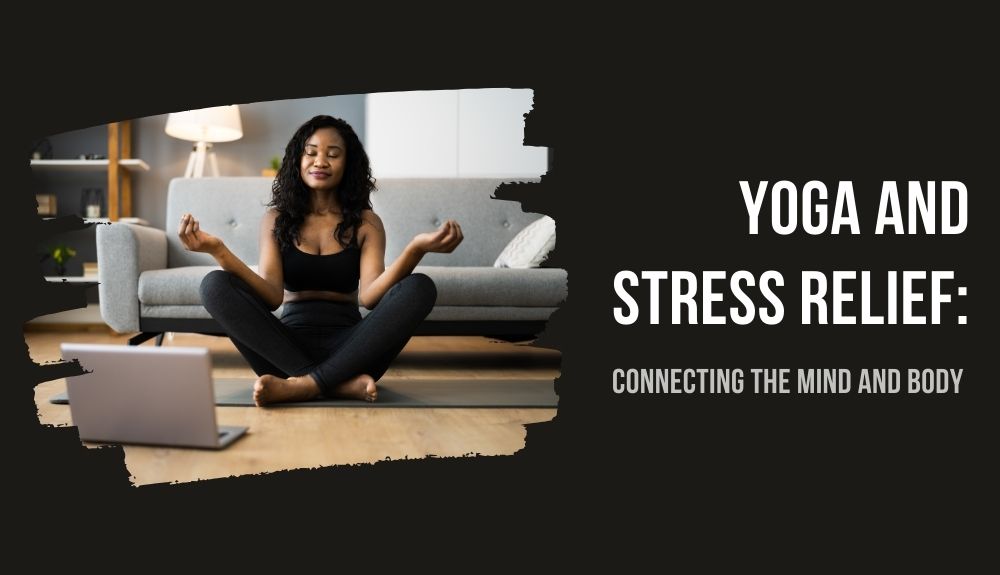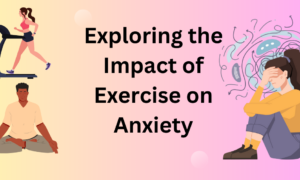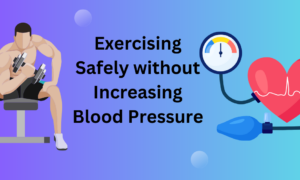Introduction to Yoga and its Benefits for Stress Relief
Welcome to our blog, where we dive into the world of yoga and explore its incredible benefits for stress relief. In today’s fast-paced society, it’s no secret that stress has become a common companion in our daily lives. But fear not! Yoga is here to rescue us from the clutches of stress and bring harmony back into our lives.
Yoga is more than just a physical exercise; it is an ancient practice that connects the mind and body through movement, breathwork, and meditation. It offers a holistic approach to wellness, allowing us to find inner peace amidst the chaos of modern life.
In this article, we will delve into the science behind the mind-body connection in yoga and discover how it helps alleviate stress. We will also explore various yoga poses that specifically target tension release and share breathing techniques that promote relaxation. Additionally, we’ll discuss incorporating meditation into your yoga practice as a way to cultivate mindfulness and create a peaceful environment for your sessions.
So grab your mat, take a deep breath, and join us on this journey towards finding serenity through yoga! Let’s begin exploring how this ancient practice can empower you with tools for managing stress effectively.
The Science Behind the Mind-Body Connection in Yoga
Yoga is not just a physical practice; it also holds immense benefits for our mental and emotional well-being. The science behind the mind-body connection in yoga helps us understand why this ancient practice is so effective in reducing stress and promoting overall health.
When we engage in yoga poses, we activate specific muscles and stimulate various parts of the body. This physical movement sends signals to our brain, triggering the release of feel-good hormones like serotonin and dopamine. These chemicals help regulate mood, reduce anxiety, and promote a sense of calmness.
Moreover, yoga incorporates deep breathing techniques that directly impact our nervous system. When we take slow, controlled breaths during yoga practice, it activates the parasympathetic nervous system responsible for relaxation responses. This counteracts the effects of chronic stress by slowing down heart rate, lowering blood pressure, and decreasing cortisol levels.
Additionally, practicing mindfulness during yoga cultivates self-awareness and brings attention to the present moment. By focusing on our breath or bodily sensations during each pose, we train our minds to let go of worries or negative thoughts. This shifts our focus away from stressors and promotes a state of tranquility.
Furthermore, studies have shown that regular yoga practice can actually reshape certain areas of the brain associated with emotion regulation and stress response. It increases gray matter volume in regions such as the hippocampus – responsible for memory formation – which may contribute to improved cognitive function and resilience against stress.
In conclusion, understanding the scientific mechanisms behind how yoga affects both mind and body emphasizes its potential as an effective tool for managing stress. By incorporating mindful movement, intentional breathing techniques,and cultivating presence through meditation,you can tap into your inner resources towards finding peace amidst life’s challenges.
Yoga Poses for Stress Relief
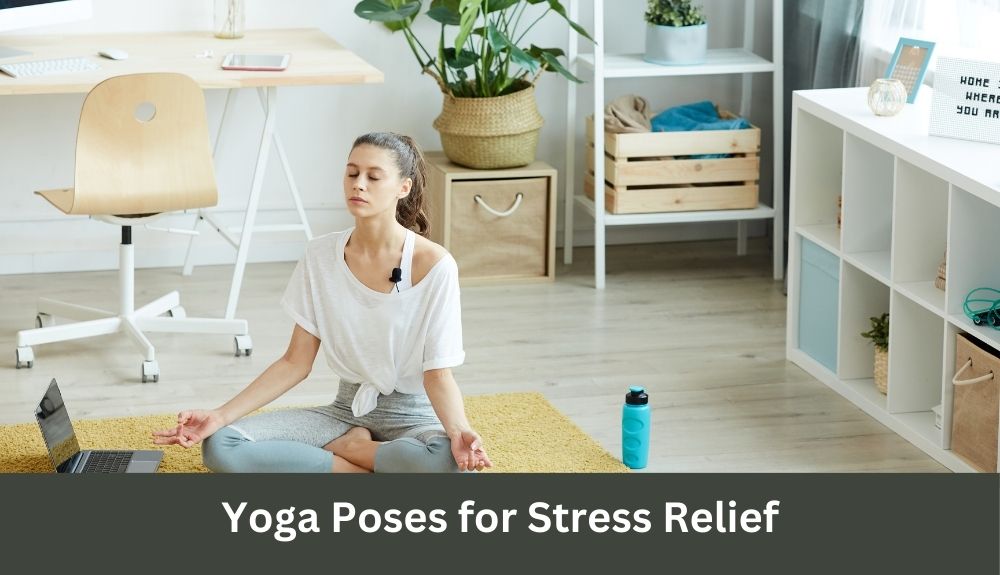
When it comes to relieving stress, certain yoga poses can work wonders. These gentle movements help release tension from the body and calm the mind. So, let’s explore some of the best yoga poses for stress relief.
1. Child’s Pose (Balasana): This pose allows you to surrender and find comfort in a fetal-like position. It gently stretches your lower back, hips, and shoulders while promoting deep relaxation.
2. Standing Forward Bend (Uttanasana): This forward fold helps release tension in the neck, shoulders, and hamstrings. As you hang forward with a soft bend in your knees, allow yourself to let go of any worries or stress that may be weighing you down.
3. Bridge Pose (Setu Bandhasana): By lifting your hips off the ground while lying on your back, this pose opens up space in your chest and releases tension from your spine. It also stimulates digestion and boosts energy levels.
4. Legs-Up-The-Wall Pose (Viparita Karani): Simply lie down with your legs resting against a wall at a 90-degree angle. This inversion pose helps calm both the body and mind by reducing anxiety and promoting relaxation.
5. Corpse Pose (Savasana) : The final relaxation pose is essential to integrate all of the benefits gained throughout your practice.
These are just a few examples of yoga poses that can help alleviate stress in our busy lives.
From here,you can begin exploring other asanas that resonate with you personally! Remember that consistency is key when it comes to finding relief through yoga.
As always, listen closely to your body’s needs,and only push yourself as far as feels comfortable.
Start incorporating these poses into daily routines ,and watch as they transform not only how we deal with everyday stresses but also how we navigate life itself.
Breathing Techniques for Relaxation
One of the key principles of yoga is focusing on the breath. By practicing specific breathing techniques, you can tap into a state of deep relaxation and calmness. These techniques are simple yet powerful tools to help alleviate stress and anxiety.
One such technique is diaphragmatic breathing, also known as belly breathing. It involves taking slow, deep breaths by expanding your belly rather than shallow chest breathing. This activates the body’s relaxation response and helps to quieten the mind.
Another effective method is alternate nostril breathing. This technique involves gently closing one nostril with your finger while inhaling through the other, then switching sides during exhaling. It balances both hemispheres of the brain and promotes a sense of balance and harmony within.
Box breathing is another popular technique used in yoga for relaxation. It involves inhaling for a count of four, holding for four counts, exhaling for four counts, and pausing again before beginning another cycle. This rhythmic pattern encourages focus and brings about a sense of inner peace.
Ujjayi breath or “victorious” breath is often practiced during physical postures (asanas) in yoga practice but can also be used independently as a relaxation technique. It involves slightly constricting the back of your throat while inhaling deeply through your nose and exhaling slowly through your mouth with an audible “ha” sound like fogging up glasses.
Practicing these various techniques regularly can have profound effects on reducing stress levels by calming down busy thoughts, slowing down heart rate, lowering blood pressure,and promoting overall well-being in both mind and body.
Incorporating Meditation into Your Yoga Practice
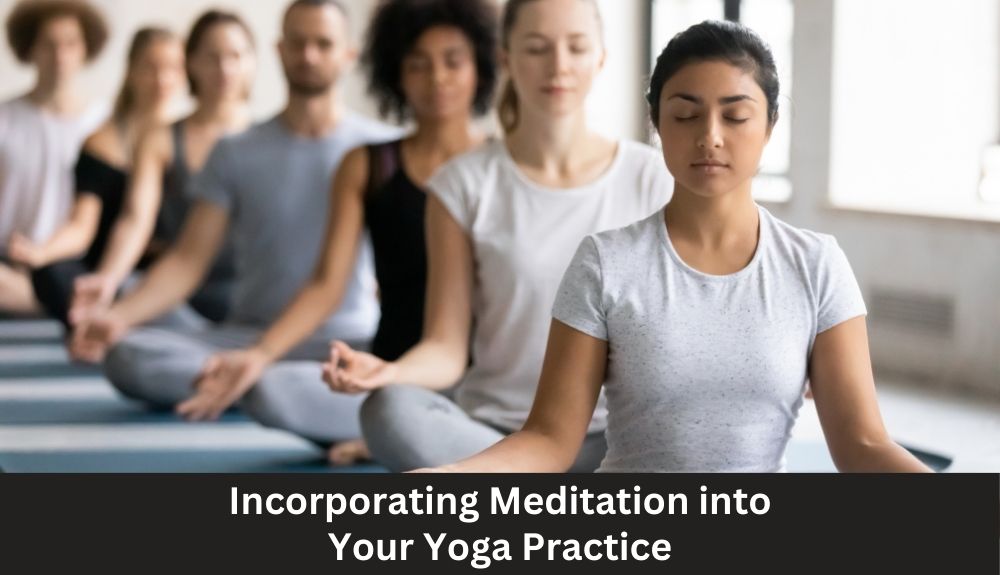
Meditation is an essential component of a yoga practice, as it allows us to quiet the mind and deepen our connection with ourselves. By incorporating meditation into your yoga routine, you can enhance the benefits of both practices.
To begin, find a comfortable seated position on your mat. Close your eyes and bring your attention to your breath. Notice the sensation of each inhale and exhale, allowing yourself to become fully present in this moment.
As thoughts arise, gently acknowledge them without judgment and let them go. Instead, focus on returning to the breath and cultivating a sense of inner stillness.
You may choose to incorporate specific meditation techniques during your practice. One common technique is mantra repetition – silently repeating a word or phrase that holds meaning for you.
Another option is visualization – creating mental images that evoke feelings of peace and relaxation. Imagine yourself surrounded by nature or visualize a calming scene from memory.
Remember, meditation is not about clearing the mind completely but rather observing thoughts without attachment. It takes time and practice to cultivate a meditative state, so be patient with yourself.
By incorporating meditation into your yoga practice regularly, you will gradually develop greater mindfulness, self-awareness, and emotional resilience. You may also experience reduced stress levels and improved overall well-being.
Next time you roll out your mat for a yoga session, take some moments at the beginning or end to dedicate solely to meditation. Allow yourself this opportunity for introspection and inner peace amidst life’s demands.
Creating a Peaceful Environment for Your Practice
When it comes to practicing yoga, creating a peaceful environment is essential for deepening your connection with both your mind and body. By setting the stage for tranquility, you can enhance the effectiveness of your practice and experience greater stress relief.
Consider choosing a space that is free from distractions. Find an area where you can focus solely on yourself and your practice without interruptions or outside noise. This could be a quiet room in your home, a serene spot in nature, or even a dedicated corner away from household chaos.
In addition to selecting the right location, it’s important to create an atmosphere that promotes peace and relaxation. Consider incorporating soft lighting through candles or dimmed lamps to create a calming ambiance. You may also want to play soothing instrumental music or nature sounds in the background to further enhance relaxation.
Another aspect of creating a peaceful environment is decluttering both physically and mentally. Clear any clutter from your yoga space as physical clutter can lead to mental distraction. Similarly, let go of any negative thoughts or worries before beginning your practice; this will allow you to fully immerse yourself in the present moment.
Don’t forget about comfort! Choose comfortable clothing that allows for ease of movement and select props such as blankets or bolsters if needed. Having these items readily available will ensure you are able to relax fully into each pose without discomfort.
By taking the time to consciously create a tranquil space for your yoga practice, you are giving yourself permission to truly unwind and find inner peace amidst life’s daily stresses. So next time you roll out your mat, remember that by nurturing an environment conducive to serenity, you are enhancing not only your physical well-being but also cultivating emotional balance within yourself.
Conclusion: Finding Inner Peace Through Yoga
In today’s fast-paced and stressful world, finding inner peace can seem like an elusive goal. However, by incorporating yoga into your daily routine, you can connect your mind and body to achieve a state of tranquility and calmness.
Yoga has been practiced for centuries and is known for its numerous benefits, including stress relief. By focusing on the breath, moving through various poses, and practicing meditation, yoga allows you to quiet the mind and find balance within yourself.
The practice of yoga is not just about physical exercise; it also involves connecting with your thoughts, emotions, and sensations in the present moment. Recent scientific studies have shown that yoga can have a profound impact on our overall well-being by positively affecting both our mental and physical health.
When we engage in deep breathing exercises during yoga practice, it stimulates the parasympathetic nervous system – responsible for promoting relaxation. This activates what is known as the “relaxation response,” which counteracts the effects of stress hormones such as cortisol.
Certain yoga poses are particularly effective at releasing tension from both the body and mind. For example:
1. Child’s Pose: This gentle resting pose stretches out the lower back while providing a sense of security and comfort.
2. Downward-Facing Dog: This pose helps lengthen tight hamstrings while simultaneously calming the mind.
3. Legs-Up-The-Wall Pose: By elevating your legs against a wall or using props to support them at an angle higher than your heart level, this pose promotes blood circulation while inducing deep relaxation.
4. Corpse Pose (Savasana): Often considered one of the most important poses in any yoga practice or class, Savasana allows complete surrender where you relax every muscle in your body.

